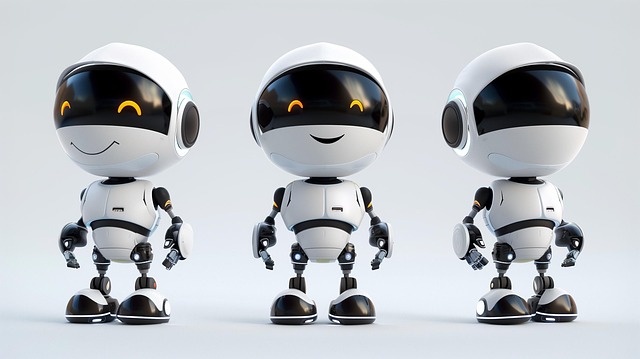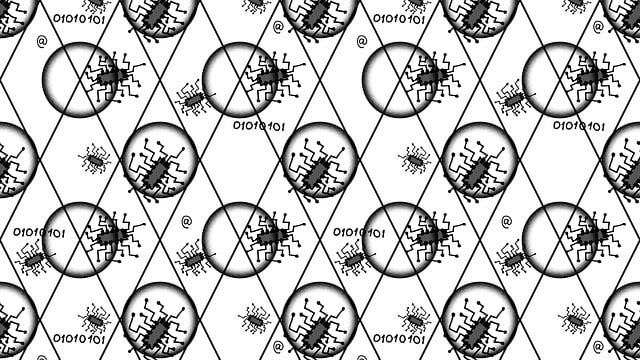Building a chatbot using free AI tools from tech giants simplifies the process for developers. The first step is defining the chatbot's purpose, such as customer support or casual conversations, and setting scope parameters like industry application and target audience. Designing conversation flow involves mapping user queries and creating an intuitive interface with interactive elements. Training, testing, and deploying involve feeding data to improve response accuracy, performing iterative checks, and launching on platforms like websites or messaging apps for enhanced user interaction.
Looking to build your own chatbot? This comprehensive guide will walk you through every step. We’ll explore OChatbot—a powerful tool for creating conversational AI—and delve into popular free AI chatbot platforms. First, define your chatbot’s purpose and scope, then design an intuitive conversation flow and user interface. Next, train, test, and deploy your chatbot with ease. By the end, you’ll be equipped to revolutionize customer engagement with your very own intelligent assistant.
- Understanding OChatbot and Free AI Chatbot Platforms
- Defining Your Chatbot's Purpose and Scope
- Designing the Conversation Flow and User Interface
- Training, Testing, and Deploying Your Chatbot
Understanding OChatbot and Free AI Chatbot Platforms

Building a chatbot involves understanding the fundamentals of conversational AI and leveraging the right tools to create an engaging experience. One key concept is OChatbot, which refers to intelligent agents designed to simulate human conversation by processing user input and generating contextually relevant responses. These chatbots use natural language processing (NLP) and machine learning algorithms to understand and interpret user queries.
Free AI chatbot platforms, such as those offered by leading tech companies, play a pivotal role in democratizing access to conversational AI. These platforms provide developers with pre-trained models, easy-to-use interfaces, and scalable infrastructure, enabling them to build and deploy chatbots without significant investment. By utilizing free ai chatbot tools, businesses and individuals can quickly create interactive assistants for customer support, lead generation, or internal communication, enhancing efficiency and user engagement.
Defining Your Chatbot's Purpose and Scope

Defining the purpose and scope of your chatbot is a crucial step in the development process. Before you begin building, ask yourself what specific problem your chatbot aims to solve or what task it will perform for your users. Chatbots can serve various functions, from providing customer support and answering frequently asked questions to offering personalized recommendations and even engaging in casual conversations.
When determining the scope, consider factors such as industry application, target audience, conversation flow, and integration with existing systems. For example, a free AI chatbot designed for e-commerce may focus on assisting customers with product inquiries, while an oChatbot tailored for healthcare could offer appointment scheduling, symptom checking, or basic medical information. Clearly defining these aspects will help guide the design, functionality, and overall user experience of your chatbot.
Designing the Conversation Flow and User Interface

When designing the conversation flow for your free AI chatbot, oChatbot, consider the user’s journey and create a logical, natural dialogue path. Start by mapping out potential user queries and tailor responses accordingly. Anticipate different user intents—whether they seek information, need assistance, or want to play around with the bot. Each interaction should lead users towards their desired outcome while ensuring a seamless and engaging experience.
The user interface plays a pivotal role in the overall success of your chatbot. Opt for a clean, intuitive design that complements the conversation flow. Incorporate interactive elements like buttons, drop-down menus, or voice input fields to enhance user interaction. A well-designed interface makes it easier for users to navigate conversations and encourages them to explore the full potential of your oChatbot.
Training, Testing, and Deploying Your Chatbot

After meticulously designing and programming your chatbot, it’s time for the crucial steps of training, testing, and deploying. Training involves feeding your chatbot a vast amount of data, which can be done using pre-existing datasets or by gathering and curating your own. This process teaches your chatbot to recognize patterns and generate appropriate responses based on user inputs. The quality and diversity of training data significantly impact the performance of your final product.
Testing is an iterative process that ensures your chatbot functions as intended and provides accurate, contextually relevant answers. It involves various techniques like unit testing for individual components and end-to-end testing to simulate real-user interactions. Regular testing helps identify bugs, refine responses, and improve overall user experience. Once testing is complete, deployment allows your chatbot to interact with users through the chosen platform, be it a website, messaging app, or social media channel. Deploying a free AI chatbot can enhance customer support, streamline communication, and provide 24/7 assistance to oChatbot users.
Building a chatbot can be a rewarding endeavor, whether for enhancing customer service or creating engaging conversational experiences. By understanding OChatbot and leveraging free AI chatbot platforms, defining a clear purpose, designing intuitive conversation flows, and rigorously testing, you can deploy a performant and user-friendly chatbot. Remember, the key lies in tailoring your chatbot to specific needs, ensuring seamless interactions, and continually refining its performance for optimal user satisfaction.
